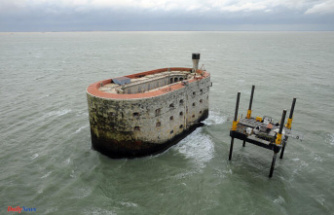Fridge-freezer combinations save space. But if you want to save costs, you shouldn't just keep an eye on the purchase price when making a purchase. Because not all devices are convincing, for example in terms of power consumption.
Anyone who wants to buy a new fridge-freezer combination and pays attention to money may first look at the purchase price of the device. Because here the range is large. But according to "Stiftung Warentest" (issue 9/22), this bill can also backfire. Because many cheap devices turn out to be power guzzlers in the test.
The testers examined a total of 25 built-in models, including energy efficiency, the expected electricity costs, cooling and freezing performance and temperature stability when storing food. The acquisition costs varied for larger models between 515 and 1750 euros. Smaller devices are available from 415 euros. With nine of the tested, mostly cheaper devices, it was clear that the purchase was not worthwhile even without looking at the electricity costs: they cooled and frosted too slowly in the test - and therefore scored "poor" or "sufficient".
Overall, a device from Siemens (model KI86SADD0) rated "good" (grade 1.9) for 1230 euros emerged as the winner of the test.
According to testers, when looking at the costs, one model in the middle price category comes off particularly well and cheaply: the "Köldgrader" model from Ikea. The calculation behind it: Assuming electricity costs of 34 cents per kilowatt hour and energy costs increasing by 5 percent annually, after 15 years of use, the 850 euro device with electricity costs of 1264 euros is cheaper than comparable sized devices with higher power consumption ("good" , 2.4).
According to the testers, a model from AEG (SCE818C5TC) for 1750 euros "good", 2.2) consumed the least power overall. Here, the electricity costs calculated for 15 years are 889 euros.
The tip from Stiftung Warentest: When buying, not only pay attention to the energy efficiency of the devices, but also to the size: because the energy efficiency class is calculated from the power consumption in relation to the storage space of the device. Large models tend to do better. However, the test shows that some smaller freezer combos with a lower efficiency class consume less electricity in absolute terms than larger, more efficient models.
And there is another advantage of smaller devices when it comes to saving electricity: They are filled to the brim with food faster. If they are opened, less cold air flows out.












